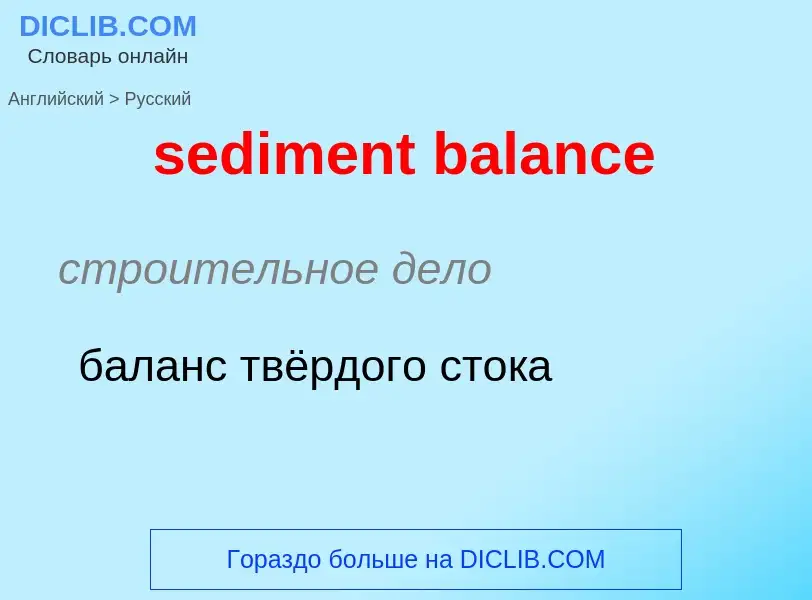Translation and analysis of words by ChatGPT artificial intelligence
On this page you can get a detailed analysis of a word or phrase, produced by the best artificial intelligence technology to date:
- how the word is used
- frequency of use
- it is used more often in oral or written speech
- word translation options
- usage examples (several phrases with translation)
- etymology
sediment balance - translation to russian
строительное дело
баланс твёрдого стока
['sedimənt]
общая лексика
осадок
отстой
нанос
отложение
отстойный
седиментационный
множественное число
наносы, отложения
нефтегазовая промышленность
осадок, отстой, гуща на дне
осадочная порода
вода и грязь из нефти
нефтяная эмульсия
осадочные отложения, наносы
Смотрите также
существительное
['sedimənt]
общая лексика
осадок
отстой
осадок, отстой
геология
отложение
осадочная порода
осадочная порода, отложение
глагол
общая лексика
осаждаться
отстаиваться
давать осадок
отстой
Definition
Wikipedia
Sediment is a naturally occurring material that is broken down by processes of weathering and erosion, and is subsequently transported by the action of wind, water, or ice or by the force of gravity acting on the particles. For example, sand and silt can be carried in suspension in river water and on reaching the sea bed deposited by sedimentation; if buried, they may eventually become sandstone and siltstone (sedimentary rocks) through lithification.
Sediments are most often transported by water (fluvial processes), but also wind (aeolian processes) and glaciers. Beach sands and river channel deposits are examples of fluvial transport and deposition, though sediment also often settles out of slow-moving or standing water in lakes and oceans. Desert sand dunes and loess are examples of aeolian transport and deposition. Glacial moraine deposits and till are ice-transported sediments.




![Sediment in the [[Gulf of Mexico]] Sediment in the [[Gulf of Mexico]]](https://commons.wikimedia.org/wiki/Special:FilePath/Sediment in the Gulf of Mexico.jpg?width=200)
![Sediment off the [[Yucatán Peninsula]] Sediment off the [[Yucatán Peninsula]]](https://commons.wikimedia.org/wiki/Special:FilePath/Sediment off the Yucatan Peninsula.jpg?width=200)


